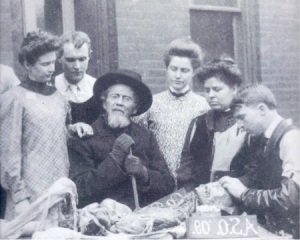
Here we draw on descriptions from Dr. Still regarding his quadriped methods with the patient’s knees on the ground and their chest on a stool. Instead of showing this method in its exact form we show modifications to demonstrate the underlying concepts.
Continue reading



 The investigative mind seems to require the ability to say “I don’t know”. From the starting point of “I don’t know” investigation may begin. Being honest with the limitations of facts or knowledge is extremely useful…we don’t begin with a conclusion. We may have useful information that points in a direction but, if we are not honest about the limits of that information, we may take it as information that is stronger than the limitations which it presents.
The investigative mind seems to require the ability to say “I don’t know”. From the starting point of “I don’t know” investigation may begin. Being honest with the limitations of facts or knowledge is extremely useful…we don’t begin with a conclusion. We may have useful information that points in a direction but, if we are not honest about the limits of that information, we may take it as information that is stronger than the limitations which it presents. As the title I chose states, Osteopathy is to be discovered. I make that statement for 3 reasons:
As the title I chose states, Osteopathy is to be discovered. I make that statement for 3 reasons: